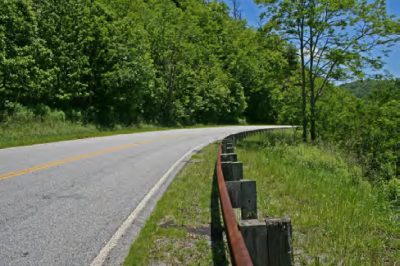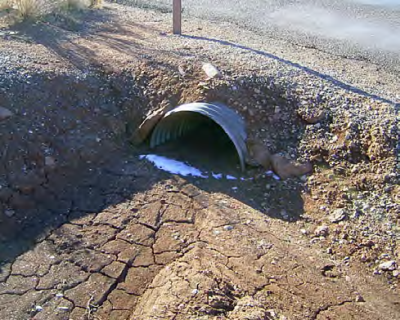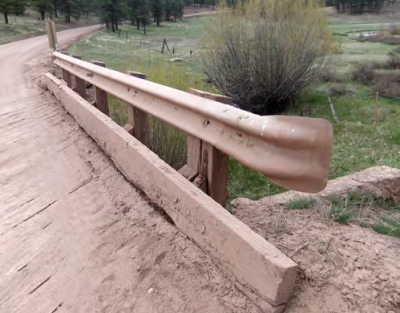Previous Chapter « Table of Contents » Next Chapter
An integrated approach to construction and maintenance is critical to ensuring long-term stability of the roadside system. As with many strategies featured in this guidebook, the best approach is to compare existing practices to sustainability strategies and to test new and innovative maintenance practices to achieve higher efficiency and more sustainable outcomes.
A number of questions concerning maintenance should be asked initially during the design and construction process and revisited post-construction through long-term maintenance (FHWA Roadside Revegetation: An Integrated Approach to Establishing Native Plants, 2007):
Maintenance needs to evolve over the life of a project. Thus, agencies need to be flexible and incorporate the capability to revise their approach if a strategy is not successful. Some strategies may need to be removed or reworked entirely, while others may become success stories that need to be recorded and replicated on future projects.
Roadside Maintenance Plans are recommended as a way to assign tasks, responsibilities, schedules and funding to ensure long- term roadside health.
Maintenance is imperative to the long-term longevity of a healthy roadside environment. Often, strategies envisioned in the design and construction phase may present lower costs upfront but prove to be more expensive over a product's lifecycle when long-term (replacement) costs are factored in. This cost-benefit ratio is often measured through lifecycle costs.
A lifecycle is defined as "consecutive and interlinked stages of a product (or project) system, from raw material acquisition or generation from natural resources to final disposal or end of life" (ISO 2006a). Most lifecycle cost analyses are completed for pavement. The FHWA Interim Technical Bulletin Lifecycle Cost Analysis in Pavement Design (1998) provides a resource for calculating pavement lifecycle costs; another option is through FHWA's RealCost software.
Lifecycle analyses for elements of the roadside beyond the pavement are rarer. The Environmental Protection Agency (EPA) has a Framework for Responsible Decision-Making (FRED: 2000) which assesses lifecycle impacts by different impact categories, such as global warming potential, acidification, human health, etc. In addition, NCHRP Report 565 provides guidance for the selection of BMPs for highway run- off control (NCHRP, 2006). A spreadsheet model is included that simulates hydrologic impacts on BMP performance. Overall, additional investigation is needed on the lifecycle of roadside elements.
To track roadside maintenance and ensure that strategies are executed, it is recommended that agencies complete roadside maintenance plans. Roadside maintenance plans designate tasks, responsibilities, schedules, and funding to ensure that all components of a roadside are considered. This plan should be enforceable but also flexible enough to adapt strategies to changing roadside conditions.
Roadside maintenance plans are typically prepared during the design process and revisited/updated during construction and operations. In order to identify and keep track of maintenance needs, a detailed inspection schedule should be established. An inspection schedule will identify items to be inspected and the frequency of inspection.
Roadside maintenance plans have a series of components, or steps, to ensure a thorough and integrated approach:

Figure 4-1 : Example of overgrown vegetation
Vegetation needs to be cleared from the guardrail to ensure safety and visibility (Cherohala Skyway between Tellico Plains, Tennessee, and Robbinsville, North Carolina).
Case Study
NEW YORK STATE DOT (NYSDOT) GREEN AND BLUE HIGHWAYS PROGRAM
The NYSDOT Office of Transportation Maintenance launched the Green and Blue Highways Program in 2005 as a grassroots effort to capitalize on maintenance field staffs' insights and capabilities, strengthening NYSDOT's environmental stewardship and sustainability efforts. Maintenance staff are encouraged to submit recommended practices that could improve sustainability/enhance the roadways, with funding possible to test these ideas.
The NYSDOT website features reports on the Green and Blue Highways Initiative for Fiscal Years 2008 - 2009 and 2009 - 2010 (https://www.dot.ny.gov/divisions/operating/oom/transportation-maintenance/green-blue-highways?nd=nysdot ).
Sample activities in these reports include:


Cascade Lake, New York
| Roadside Feature and Location | Maintenance Category* | Maintenance Strategy | Date Performed | Performed by | Materials Cost | Labor Hours | Observations | Coordination with other disciplines |
|---|---|---|---|---|---|---|---|---|
| Box Culvert; MP 101 | Routine | Remove accumulated debris | 6/1/2011 | DOT Maintenance Division |
$4,000 | 6 | Need to visit more frequently | Need to work with Landscape Group concerning noxious weeds in culvert |
*Example categories include preventive, routine, and remedial (non-routine).
INTEGRATED VEGETATION MANAGEMENT (IVM)
IVM is a coordinated decision-making and action process that uses the most appropriate and effective vegetation management methods and strategies, along with a monitoring and evaluation system, to achieve roadside maintenance program goals and objectives. IVM develops strategies and methods to prevent invasive weeds from overwhelming roadsides and planted roadside vegetation. Washington State DOT has developed Area Integrated Roadside Vegetation Management (IRVM) plans for each of the 24 maintenance areas in the state. These plans serve as a guide to set priorities and direct maintenance actions for roadside vegetation management within each area's highway corridors.
Source: https://www.wsdot.wa.gov/Maintenance/Roadside/vegetation.htm
Each of the disciplines discussed in this guidebook must consider maintenance. Maintenance personnel need to be educated on the selected maintenance strategies, embrace sustainability goals, and be part of the feedback process. The following lists specific items to consider under each discipline.
Hydraulic Design
Maintenance of hydraulic design features includes maintenance of ditches, side slopes, structures (drop inlets, pipe ends, culvert heads, etc.). Maintenance efforts for these features should ensure their long- term effectiveness in handling roadside drainage and keeping the traveling motorist safe. Stormwater facilities should be able to continue their function long-term and as originally designed. Lack of proper operation and maintenance is often cited as the number one reason for failure of stormwater facilities (Chester County Pennsylvania, 2004).
Geotech
Maintenance of side slopes and structural features, such as walls, are the key considerations under the Geotechnical discipline.
Vegetation
The goal for roadside revegetation is to create a stable, self-regulating vegetation system that requires minimal maintenance and low lifecycle costs. If left alone, vegetation can grow out of control, blocking driver visibility of signs, wildlife, and other potential hazards.
Safety
Maintenance of structural features along a roadway (guardrail, walls, etc.) helps to maintain driver safety and improve overall aesthetics.

Figure 4-2: Example of a culvert clogged by sediment
(Source: Parsons Brinckerhoff, Capitol Reef Route 10, Utah)

Figure 4-3: Example of a guardrail not meeting safety requirements
(Source: Parsons Brinckerhoff, Cuba La Cueva, New Mexico)